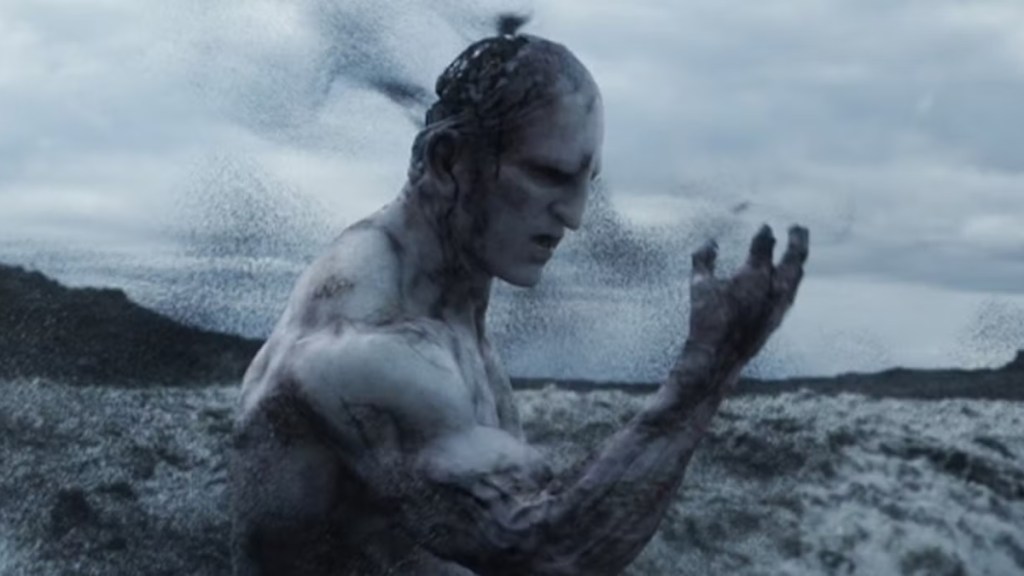Alien (1979) thrived as a sci-fi/horror film by taking the mystery of space exploration and the vast unknowns of the universe to weaponize them as a claustrophobic nightmare. The original xenomorph monster wasn’t ever named in the film: it was just a twisted form of parasitic life that some oblivious and unlucky humans stumbled across. However, as Alien has grown into a major staple of the horror genre in the last 40+ years, there have been the typical efforts to expand and (over-)explain the mythos established in the first film — including the full origin story of the xenomorphs. After three Alien sequels were released during the 1980s and 1990s, Ridley Scott finally returned to the franchise in the early 2010s to answer the question of how that Space Jockey ship ended up on LV-426 full of facehugger eggs. However, in providing that answer, Scott only ended up sparking a whole new set of questions.
Videos by ComicBook.com
The latest three Alien movies (Prometheus, Alien: Covenant, and Alien: Romulus) have expanded the scope of the xenomorphs’ storyline. Those films introduced “the black goo,” into the franchise – a mysterious mutagen material that can wildly alter biological lifeforms, and/or create the “perfect” hybrid organism, known as the xenomorph. It’s clear from Alien chat threads that the fractured origin story of the xenomorphs still confuses many fans. Here’s the breakdown of how it all fits together.
Alien’s Xenomorph Origin Explained
The Engineers & the Black Goo

The Engineers were an alien species that pre-dated humanity by millions of years. Prometheus’ opening scene (where an Engineer sacrifices himself to kickstart Earth’s “Genesis” moment), implies that the white-skinned humanoids are the biological progenitors to all life on Earth – including humans. What has never been revealed is how, when, and where, the Engineers harnessed the potential life-creating power of the black goo, or where the substance originates from.
It’s never technically confirmed if the black goo is a naturally occurring substance or if it is a scientifically engineered material; as of Alien: Romulus there is a definite “chicken or the egg?” question about whether xenomorphs were originally created from the black goo’s mutation effects on other life forms, or if the goo was originally extracted by from some kind of biological source, and xenomorphs are just the “perfected” result of its mutagenic properties.
Romulus introduced “The Offspring,” a human/xenomorph hybrid created from a pregnant human woman using a black goo compound (reverse-engineered and altered by Weyland-Yutani scientists) on herself. The resulting hybrid creature clearly had Engineer characteristics in the mix, which adds another wrinkle to this mystery: it could be that Engineer DNA is the core component of the black goo – it could also be true that Weyland-Yutani scientists added Engineer DNA to their mix, in a bid to achieve to create a goo that augments and enhances human physiology, instead of creating monsters (the “Prometheus” serum).

Tampering with the black goo is a big question still looming over the modern franchise; Prometheus, Alien: Covenant, and Alien: Romulus have each featured different versions of the black goo, which were each experimented on by very different factions. Prometheus introduced the weaponized canisters of black goo that the Engineers developed and stored in off-world lab facilities, used to either eradicate life from entire planets and/or create new mutated lifeforms to populate worlds. Alien: Covenant revealed a black goo compound that rogue android David (Michael Fassbender) further developed while stranded on the Engineer homeworld; however, the black goo David developed resulted in the creation of the skinnier, fleshy, white-skinned “Neomorph” version of the creatures; David then perfected the process by introducing the intermediate step of the facehugger parasites, which could infect hosts with mutant DNA in the form of embryos that grow into the far more powerful, black-skinned, mesoskeleton-coated xenomorph drones (like “Xenomorph XX121” in the original film).
[RELATED: Alien: Romulus director teases bold new direction with sequel film]
Gap in Evolution

Admittedly, the Alien franchise still has a major gap to fill in explaining the backstory leading to the original film. The final scene of Alien: Covenant reveals that David escaped the Engineer homeworld aboard the Covenant ship, and brought facehugger embryos along with him. The hole in the story is found when trying to explain how David – creator of the facehugger eggs – went from seemingly roaming the stars, experimenting with creating the perfect lifeform, to having those eggs show up on an Engineer ship that crashed on LV-426. The implication is that the Engineer corpse on LV-426 is millions of years old – in the larger post-Prometheus continuity it would be easily inferable that the LV-426 crash was another case of a bio-weapon accidentally getting loose, and then laying dormant until another opportunity for infection arose.
While some fans get hung up on the timeline discrepancy of David’s experiments vs. the LV-426 crash, Alien has left room for the two events not to be directly connected. Prometheus and Alien: Covenant both had major Easter eggs implying that the Engineers were very aware of (and even revered) the xenomorphs in their culture. The final sequence of Prometheus revealed that an infected Engineer will birth an “Aethon” (or “Deacon”) sub-species of xenomorph, which has similar characteristics (long dome-shaped head, no eyes, extendable jaw), so obviously the Engineers had experience with that threat. We can settle this whole discrepancy by positing that David was not the first scientist to unlock the facehugger/egg method of using the black goo – and that the “Space Jockey” Engineer was an older example of that facehugger/egg process that fell into obscurity after the ship crashed and was lost on LV-426.
That kind of explanation is the more exciting one, arguably: it opens several windows of possibility for the Alien franchise to explore in the future. David’s continuing story is one; the story of how that ship crashed on LV-426 is another – as is the question of what happened to the Prometheus serum in the decades between Alien: Romulus and Aliens. That’s not even counting what other bold new swings the franchise could take next, beyond explaining every detail of what’s already occurred.
Alien movies are available to stream on Hulu-Disney+.








